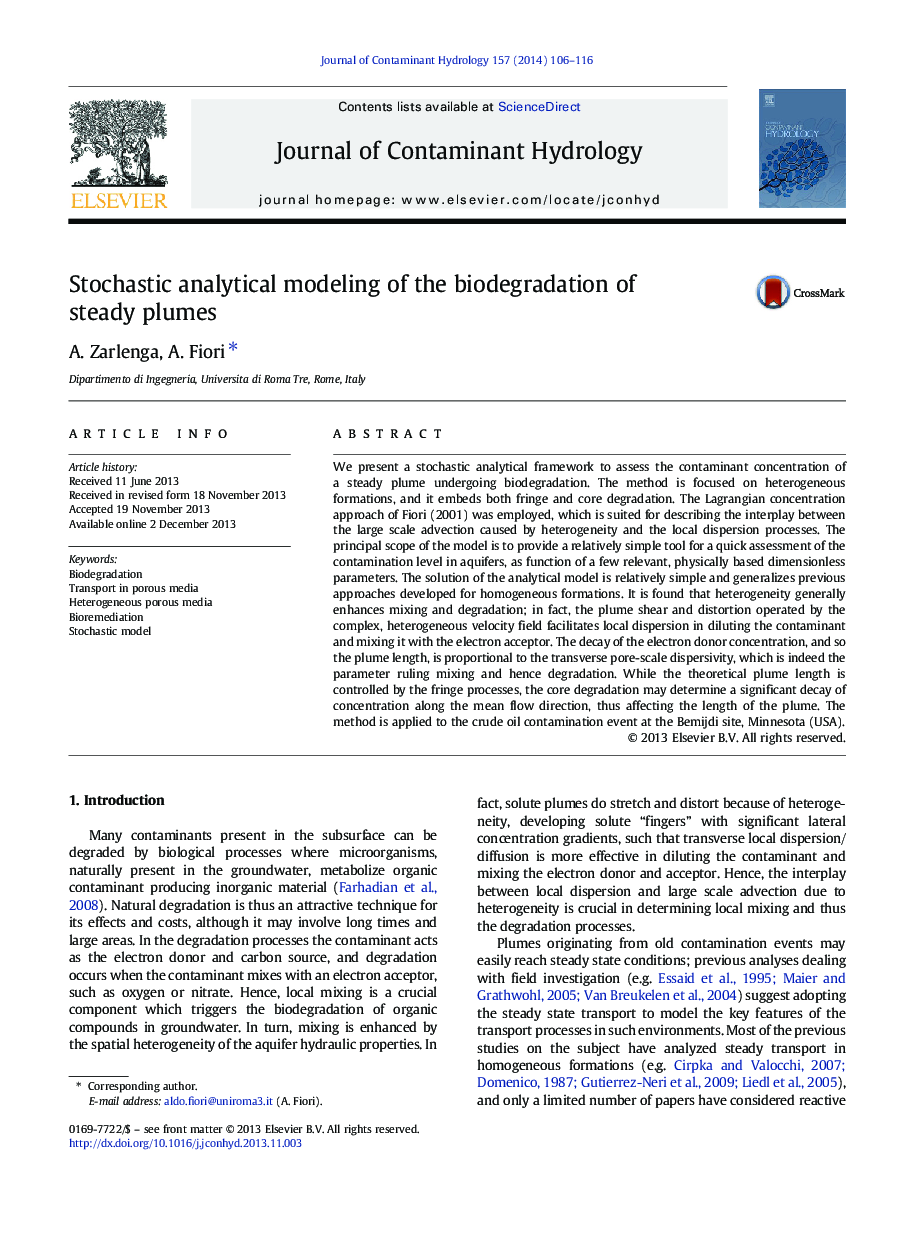| کد مقاله | کد نشریه | سال انتشار | مقاله انگلیسی | نسخه تمام متن |
|---|---|---|---|---|
| 4546620 | 1627050 | 2014 | 11 صفحه PDF | دانلود رایگان |
• We develop a stochastic model for the biodegradation of steady plumes.
• We focus on heterogeneous formations, assessing both fringe and core degradation.
• The scope is to provide a relatively simple screening tool for the contamination.
• It is found that heterogeneity generally enhances mixing and degradation.
• The plume length is proportional to the transverse pore‐scale dispersivity.
We present a stochastic analytical framework to assess the contaminant concentration of a steady plume undergoing biodegradation. The method is focused on heterogeneous formations, and it embeds both fringe and core degradation. The Lagrangian concentration approach of Fiori (2001) was employed, which is suited for describing the interplay between the large scale advection caused by heterogeneity and the local dispersion processes. The principal scope of the model is to provide a relatively simple tool for a quick assessment of the contamination level in aquifers, as function of a few relevant, physically based dimensionless parameters. The solution of the analytical model is relatively simple and generalizes previous approaches developed for homogeneous formations. It is found that heterogeneity generally enhances mixing and degradation; in fact, the plume shear and distortion operated by the complex, heterogeneous velocity field facilitates local dispersion in diluting the contaminant and mixing it with the electron acceptor. The decay of the electron donor concentration, and so the plume length, is proportional to the transverse pore-scale dispersivity, which is indeed the parameter ruling mixing and hence degradation. While the theoretical plume length is controlled by the fringe processes, the core degradation may determine a significant decay of concentration along the mean flow direction, thus affecting the length of the plume. The method is applied to the crude oil contamination event at the Bemijdi site, Minnesota (USA).
Journal: Journal of Contaminant Hydrology - Volume 157, February 2014, Pages 106–116
